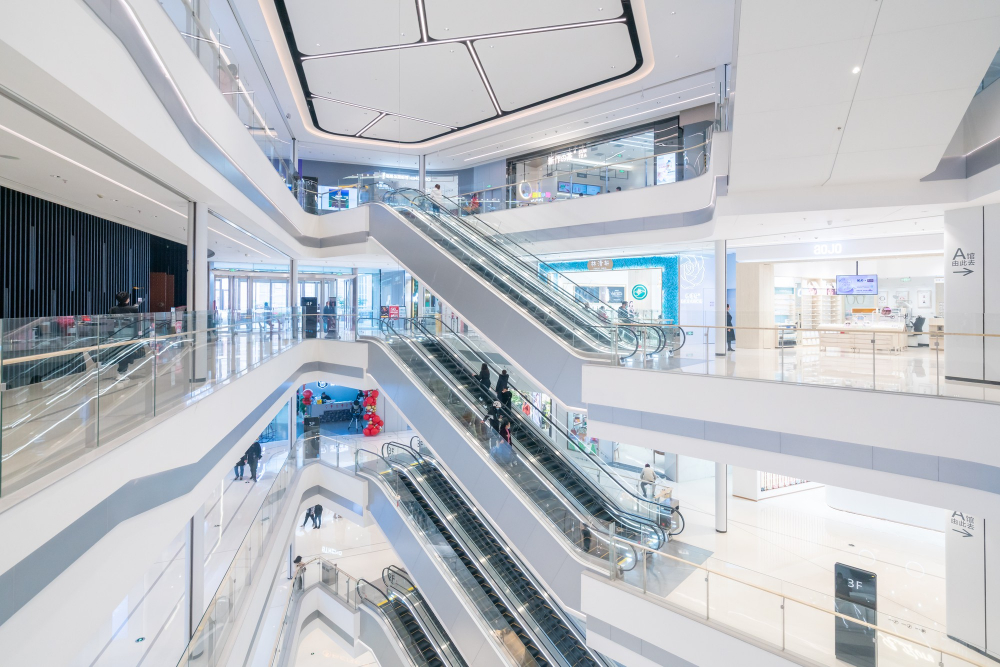Ventilation systems in shopping malls (malls) are important in many respects. First, due to the high human density in malls, the air we breathe needs to be circulated and purified. The ventilation system fulfills this function by taking in fresh and clean air, expelling dirty air, and eliminating odors.
Moreover, the use of stores and restaurants in malls can lead to high levels of heat and humidity. The ventilation system controls this humidity and heat, increasing the comfort of customers and employees.
On the other hand, ventilations also play a vital role in the event of a fire. During a fire, ventilation ducts are kept open for smoke evacuation and are integrated with sprinkler systems designed to prevent the spread of fire. This allows fire extinguishing operations to be carried out more quickly and effectively.
Shopping malls are enclosed spaces where temperature and ventilation issues can arise. Therefore, shopping mall ventilation systems are designed to purify the indoor air, provide fresh air, and control humidity.

Shopping mall ventilation systems are typically constructed using ducts, filters, fans, and cooling units. The purpose of the system is to draw fresh air from outside, expel polluted air, and regulate the temperature and humidity of the indoor environment.
However, shopping mall ventilations are also known for their complex structures. Therefore, regular maintenance and cleaning are crucial. Additionally, more modern and intelligent shopping mall ventilation systems are being developed and implemented.
In shopping mall ventilations, the intake ducts bring in fresh air from outside to the interior. This clean air is sent to filters where it is purified from pollutants. The purpose of the filters is to remove dust, pollen, and other air pollution elements, thereby improving air quality.
The filtered air is directed towards the interior through fans. Fans help distribute the air to indoor areas and also guide the airflow towards the exit ducts, which allow the air to leave the interior.
Most modern shopping mall ventilation systems are equipped with temperature and humidity sensors. These sensors assist in measuring the indoor temperature and humidity and activate or deactivate the ventilation system accordingly. Thanks to the sensors, indoor temperature and humidity can be kept under control, enabling energy savings.
The ventilation system used in shopping malls is a system with important functions such as ensuring fresh air circulation in indoor areas, improving air quality, and maintaining control over indoor temperature and humidity.
The most fundamental purpose of the ventilation system is to transport fresh air from outside to the interior, thereby reducing indoor pollutants. These pollutants include elements such as dust, pollen, mold, and bacteria.
Additionally, humidity control prevents problems like mold and fungus that could occur if the indoor humidity level is too high. Through sensors in the ventilation systems that measure indoor temperature and humidity, the ventilation system is not operated unnecessarily.
Shopping mall ventilation systems are produced in different models and features. These systems are designed according to the size of the mall, the structure of the interior, and its needs. Some common ventilation system models and their features include:
Each of these models has different features and should be chosen according to the needs of the mall. For example, a constant volume system might be sufficient for a small mall, whereas larger malls might require more advanced systems like chillers or VRFs.
The ventilation systems of shopping malls consist of four main components: intake ducts, filters, fans, and exhaust ducts. In addition, modern shopping mall ventilation systems may also include additional elements such as temperature and humidity sensors.
Sensors help measure indoor temperature and humidity, enabling the ventilation systems to activate or deactivate accordingly. Thanks to these sensors, indoor temperature and humidity can be maintained under control, resulting in energy savings.
In the installation of shopping mall ventilation systems, the process moves to the installation phase following a needs analysis and design. The needs analysis identifies the requirements of the shopping mall and examines its existing infrastructure. Components such as intake ducts, filters, fans, and exhaust ducts are placed and tested.
After the completion of the installation, tests of the ventilation system should be conducted to check temperature, humidity, and air quality. Following these adjustments, some specific modifications are made to optimize the operation of the system. The maintenance of the system should be carried out regularly.
Central ventilation systems in shopping malls require regular maintenance and repair activities. The frequency of these activities depends on the size of the system and the intensity of its use. It is generally recommended to perform periodic maintenance twice a year.
Maintenance activities include cleaning or replacing filters, checking fans, adjusting the tension of motor belts, and cleaning heating and cooling coils. Repair activities, on the other hand, involve fixing malfunctions that occur in the system. Malfunctions typically occur in fans or motors.
In the supply of shopping mall ventilation systems, the selection of appropriate components and the use of high-quality materials are crucial. Therefore, reliable suppliers should be preferred for the system supply.
Additionally, it is important for the supplier to offer post-sale technical support services. Technical support is necessary during the installation, testing, and commissioning process of the system. The technical support team can assist with any issues that may arise during and after installation.
For your shopping mall ventilation system needs, you can consider ERF Group. ERF Group specializes in the manufacture and sale of industrial fans. To find the right solutions for your needs, you can contact the company representatives through erfgroup.com to get detailed information and a price quote.